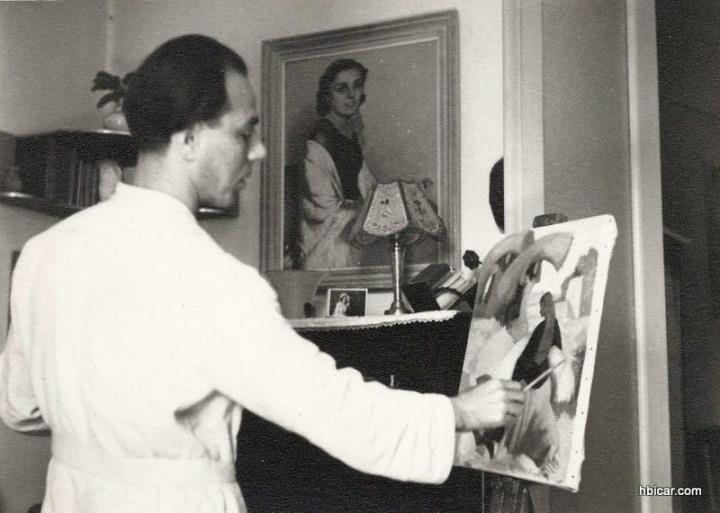
Hussein Amin Bicar (1913 in Alexandria – November 2002 in Cairo) is one of Egypt’s most prominent artists of the 20th century.
From his childhood in Alexandria, Bicar seemed destined to be an artist. He could play the lute at the age of eight, and by nine, he was in demand as a music teacher for society ladies who, due to cultural restrictions, could not use adult male teachers.
Since graduating from Cairo’s School of Fine arts in 1934, Bicar spent more than 60 years of his life teaching art at schools and universities. In his senior year, he was able to study with Ahmad Sabri, the best portraitist in Egypt, who became his mentor and lifelong friend. In 1939, Bicar was selected as a member of a team of teachers who went to Morocco to teach at the invitation of the Moroccan government. In 1943, after his return to Egypt, he was appointed assistant to his former professor, Ahmed Sabri. Bicar spent the next 17 years there until he was appointed chair of the painting department, where he taught many contemporary Egyptian artists. His inclination to draw on Egyptian heritage was inspirational.
Being the first Egyptian artist to illustrate Arabic children’s books, Bicar has played a major role in establishing and promoting this field. Through the press, Bicar is credited for initiating a style of journalistic art that elevated newspapers illustration to a level close to that of Fine Art. Bicar’s contribution goes beyond illustration and includes art criticism and narrative poetry.
As a painter, Bicar’s work is characterized by pure and simple lines that convey forcefulness and spirituality elements. His versatility repeatedly appears as he works in various media, including watercolor, oils, and tempera — but the result is a distinctive Bicar style.
His subject matter is Egyptian. Unlike classical Greek or Roman art, which may be described as basically physical, the essence of Egyptian art is spiritual. The stylized figures in his paintings carry a poetic message representing the stability, mobility, and strength to be found in the character of Egypt’s agrarian roots. His sparse, minimalistic lines often impose a sculptured quality on his figures in their austere settings.
This philosophical orientation towards expressing the spirituality of subjects is also apparent in Bicar’s portraits. His subjects seem to glow and exude their personalities. Since his college days, Bicar has continued to be an outstanding portrait artist.
A gentle, modest, and extremely gifted man, Hussein Bicar’s contribution to the arts of Egypt is beyond measure. After more than half a century as an artist and critic, he continued to be eclectic in his tastes, receptive to change, and eager to understand all art schools as they reflect world conditions. Elegant in his simplicity, Bicar explained, “To understand is to appreciate”.
In the words of late journalist Mustafa Amin: “He is not a single artist, he is a master of several arts. He is a painter, photographer, poet, musician, and philosopher”.
(Sobhy Sharony, Bicar, 2002)
Bicar was of Turkish extraction and a member of the Bahá’í faith.